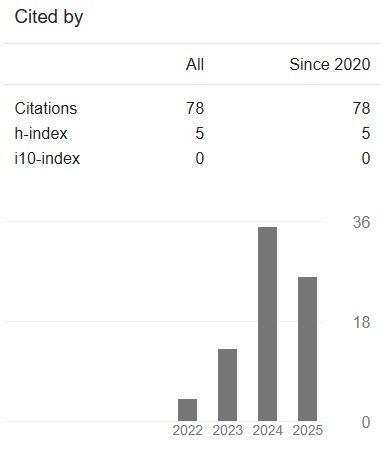Optimising F1 in Schools Car Design Using CFD Simulation and Wind Tunnel Testing for Enhanced Aerodynamic Performance
DOI:
https://doi.org/10.24191/jaeds.v4i1.77Keywords:
CFD, F1 in Schools, drag force, aerodynamic, wind tunnelAbstract
F1 in Schools, a STEM competition for students, fosters collaborative design and manufacturing of the fastest miniature cars inspired by Formula 1 racing. To achieve the fastest car, the design must be optimised to reduce drag as much as possible. This paper focuses on optimising drag force, a key determinant of speed and stability. Through CFD simulations, various design iterations were evaluated. Each change was made based on targeting airflow obstructions and flow separation. A wind tunnel experiment was conducted to verify the results obtained through CFD. Results show that modifications significantly reduced drag force by 9.89%. Insights from this study underscore the importance of iterative design processes. Further enhancements could involve analysing pressure distribution and lift force to maximise thrust utilisation and improve race performance.
Downloads
References
V. Jansson, "A literature study of rolling resistance and its affecting factors," KTH Royal Institute of Technology, 2022.
F1 in Schools. "Australia set new record at F1 in Schools World Finals." https://www.formula1.com/en/latest/headlines/2016/10/australia-set-new-world-record-at-f1-in-schools-world-finals.html (accessed 19 March, 2024).
"How F1 in Schools is Introducing the Next Generation to Motorsport." https://www.mclaren.com/racing/formula-1/2023/how-f1-in-schools-is-introducing-the-next-generation-to-motorsport/ (accessed 19 March, 2024).
M. R. A. Mansor and Z. Harun, "F1 in Schools competition to promote STEM: Aerodynamic investigation of miniature F1 in Schools car," in 2017 7th World Engineering Education Forum (WEEF), 2017: IEEE, pp. 708-712.
A. Guerrero and R. Castilla, "Aerodynamic study of the wake effects on a formula 1 car," Energies, vol. 13, no. 19, p. 5183, 2020.
U. Ravelli and M. Savini, "Aerodynamic investigation of blunt and slender bodies in ground effect using OpenFOAM," International Journal of Aerodynamics, vol. 7, no. 1, pp. 36-60, 2020.
L. Cattafesta, C. Bahr, and J. Mathew, "Fundamentals of wind-tunnel design," Encyclopedia of aerospace engineering, pp. 1-10, 2010.
M. Aultman, Z. Wang, R. Auza-Gutierrez, and L. Duan, "Evaluation of CFD methodologies for prediction of flows around simplified and complex automotive models," Computers & Fluids, vol. 236, p. 105297, 2022.
E. Josefsson, T. Hobeika, and S. Sebben, "Evaluation of wind tunnel interference on numerical prediction of wheel aerodynamics," Journal of Wind Engineering and Industrial Aerodynamics, vol. 224, p. 104945, 2022.
A. Cogotti, "A parametric study on the ground effect of a simplified car model," SAE transactions, pp. 180-204, 1998.
Downloads
Published
How to Cite
Issue
Section
License
Copyright (c) 2024 Mohd Hanif Mat Muhammad, Ramlan Kasiran, Nurzaki Ikhsan, Mohamad Nur Afendi Mohamed Den

This work is licensed under a Creative Commons Attribution 4.0 International License.









